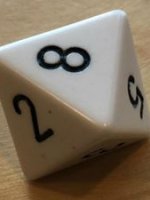Like many Ravenloft tabletop adventures, five adventurers are plucked from the realms by the mists to find themselves in Barovia. As usual, Strahd sends one of his minions to invite the newcomers to his castle to enjoy his hospitality, a.k.a. for Strahd to mess with their minds and tempt them.
The characters are:
- Rotrog: An arrogant Orc wizard apprentice
- Kah: A shy Kenku cleric from Waterdeep
- Fielle: A cheerful human artificer from Baldur’s Gate
- Alishai: A moody, hot-tempered Tiefling paladin to Selune
- Chivarion: A good-natured Drow barbarian with a hairless tressym named “Murder” as his pet.
Should You Buy It?
I found Heir to Strahd interesting because while it presented elements of Barovia that Ravenloft players and DMs will be very familiar with, not everything was what I had expected, even though I’ve GM’d Ravenloft adventures. The spirit of Tatyana most notably was presented in a way I did not expect based on the prior information I had read.I don’t want to explain too much about Tatyana, and how she factors into the plot because it could ruin the mystery of who falls prey to the darkness to become the titular character. I will say that I suspected the doomed character at first, then talked myself out of it, assuming it was a feint to distract from another option. A later character reveal reinforced my original suspicion, but I still thought there might be a twist to go in the another direction. There wasn’t but instead of being unsatisfying, the ending makes me eager for a sequel.
Regardless of how one feels about the mystery and certain aspects of the ending, this Ravenloft novel can be very useful for anyone thinking of DMing an adventure set in Barovia. Dawson, the author of a few Star Wars novels and several fantasy novels, not only sets the tone very well for Barovia but also shows how Strahd could be played by a DM. The audiobook in particular showcased how even a simple conversation with Strahd can be equal parts charming and sinister.
For those who like or prefer audiobooks, the narration by Ellie Gossage was very good. It’s also available in hardcover and ebook editions.
Dungeons & Dragons: Ravenloft: Heir of Strahd: B+.




